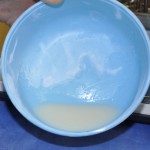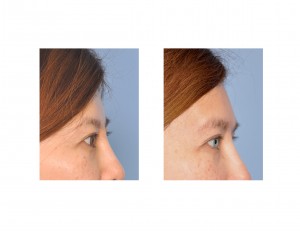Forehead augmentation is done for a variety of aesthetic reasons including increasing the convexity and projection of the forehead. A forehead that slopes back too severely or lacks brow bone projection can be built up by an onlay or augmentative cranioplasty. This is always done with an alloplastic material rather than a bone graft due to its simplicity and long-term predictability of volume and shape.

In the September 2013 issue of the Journal of Craniofacial Surgery an article was published entitled ‘Using Methyl Methacrylate for Forehead Augmentation for Aesthetic Purposes’. In this paper, the experience using an outpatient procedure for PMMA for aesthetic forehead contouring was reviewed over a 6 year period. In 210 patients, a limited incision scalp incision was made and PMMA material was placed and molded through the skin. The amount of PMMA was only 10 to 40 grams with a mean amount of 25 grams. In following the patient an average time of nearly four years, most patients were satisfied with the results. The authors conclude that aesthetic forehead augmentation using methyl methacrylate is an effective surgical procedure with minimal side effects and a high degree of patient satisfaction.

What this study also shows is the safety of PMMA as an onlay cranioplasty material. While it is more of an ‘unnatural’ material than HA, its lack of bone bonding or bone ingrowth does not detract from its long-term successful and uncomplicated use.
Dr. Barry Eppley
Indianapolis, Indiana


